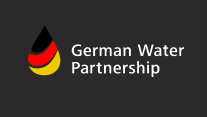Learning
Textbook
Dive deep into the theory and learn from our comprehensive online textbook. Find everything you need from the first steps to the successful completion of your project.
Before initiating a Stakeholder Dialogue, you need a thorough understanding of the concept behind them. We have compiled the theoretical background of Stakeholder Dialogues, enabling you to understand their key elements: When to apply them, how to prepare, implement and evaluate them.
Getting started
This section gets you started by exploring the field of Stakeholder Dialogues. It explains when Stakeholder Dialogues are the appropriate approach to take, what forms of Stakeholder Dialogues exist and highlights their most important principles.
Getting active
This section introduces you to the Dialogic Change Model, our core methodology for the implementation of Stakeholder Dialogues. It shows the different phases of Stakeholder Dialogues and helps you to understand what is required in each phase.
Getting reflective
This section invites you to reflect on the progress and quality of your Stakeholder Dialogue. By highlighting the eight key factors for successful Stakeholder Dialogues it offers an approach to monitoring dialogue processes.
Toolbox
Turn theory into practice: assess and design the steps you need to bring your Stakeholder Dialogue forward - with our e-learning tools
Need to get a quick start? We hand-picked some tools for you to try out:
 Readiness Check
Readiness Check
How do you create the appropriate conditions for the application of a Stakeholder Dialogue? This tool is a great starting point if you you are considering the initiation of a Stakeholder Dialogue, but are not sure whether your project is ready yet.
 DCM Phase 1
DCM Phase 1
Following the four phases of our Dialogic Change Model this tool assesses if your project has brought forward the most important aspects of Phase one sufficiently to step into the next phase of engagement.




